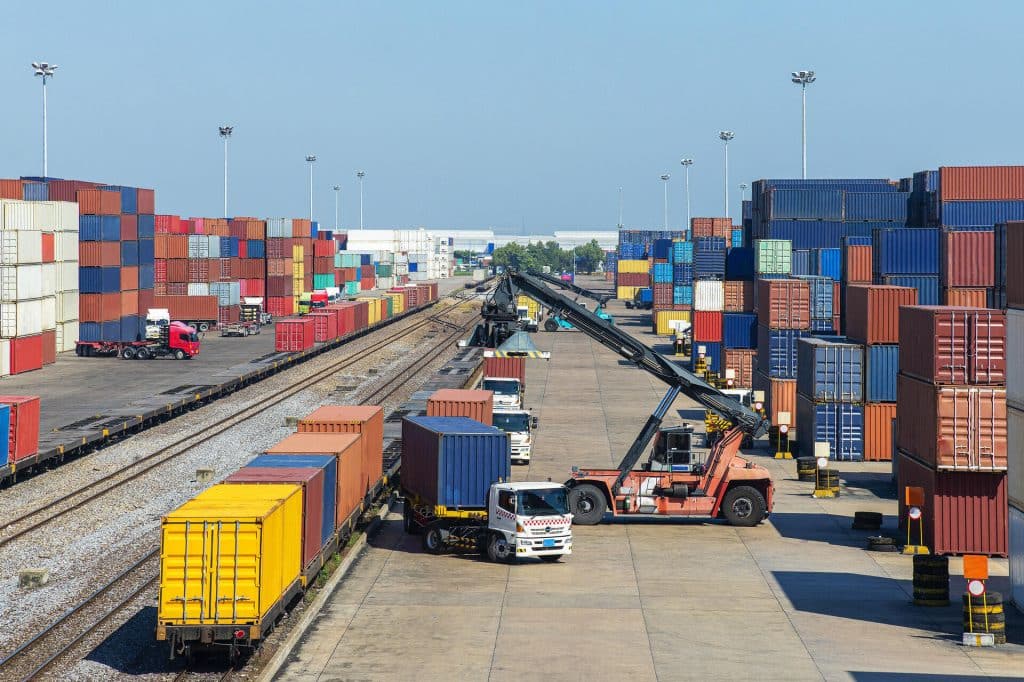How To Ship Things When Moving
Moving to a new location can be an exciting chapter in life, but it also comes with the challenge of transporting your belongings safely and efficiently. Whether you’re relocating across town or to a different country, knowing how to ship things when moving is crucial to ensure a smooth transition. In this guide, we will explore essential tips and strategies for hassle-free shipping.
Firstly, proper planning is paramount. Create an inventory of all the items you intend to ship, categorizing them by fragility, size, and value. This step will help you determine the appropriate packing materials needed for each item and assist in assessing the shipping costs.
Secondly, invest in quality packing materials. Sturdy boxes, bubble wrap, packing peanuts, and packing tape are essential for safeguarding your belongings during transit. Pay particular attention to delicate and valuable items to prevent damage.
Next, research and choose the most suitable shipping method for your needs. Options like air freight, sea freight, ground shipping, or a combination thereof, each have their advantages and limitations in terms of cost and delivery time.
Furthermore, label each package clearly and accurately, including both the sender’s and recipient’s details. This step is crucial to avoid confusion and ensure timely delivery.
Lastly, consider hiring a reputable moving company or moving service with experience in handling long-distance relocations. Professional movers can offer valuable expertise, insurance options, and tracking services for added peace of mind.
By following these key attributes and practical tips, you can streamline the process of shipping your belongings when moving, allowing you to focus on embracing the new opportunities that await your destination.
How To Ship Moving Boxes
Shipping moving boxes can be a nerve-wracking task, especially when you’re relocating to a new place. Ensuring that your treasured possessions arrive at your destination safely and intact requires careful planning and attention to detail. In this article, we’ll explore essential tips on how to ship moving boxes efficiently and stress-free.
- Proper Packing: Before shipping, ensure that your moving boxes are packed securely. Use sturdy corrugated boxes of various sizes to accommodate different items. Wrap delicate items individually with bubble wrap or packing paper and fill any empty spaces with packing peanuts to prevent shifting during transit.
- Labeling: Clear and accurate labeling is crucial for a smooth shipping process. Clearly mark each box with its contents and indicate if it contains fragile or valuable items. Label both the top and sides of the box to make identification easy, regardless of how a few boxes are stacked during transportation.
- Choose the Right Shipping Method: Depending on the distance and urgency of your move, consider various shipping options. For long-distance relocations, freight services like air or sea shipping may be more suitable, while ground shipping can be ideal for shorter distances. Compare rates and delivery times to make an informed decision.
- Insurance Coverage: While shipping your moving boxes, opt for insurance coverage to protect your valuables in case of unforeseen mishaps or accidents during transit. Many shipping carriers offer insurance options that can provide peace of mind during your move.
- Tracking and Confirmation: Select shipping services that provide tracking facilities. Being able to monitor the progress of your shipment can ease any anxieties about its whereabouts and estimated delivery time. Additionally, request confirmation receipts to ensure that your packages have been successfully delivered.
- Consider Shipping Services: If the prospect of handling the shipping process seems daunting, consider hiring a professional moving service that offers packing and shipping assistance. These experts have the experience and knowledge to handle your moving boxes with care, leaving you free to focus on other aspects of your move.
- Timing is Key: Plan your shipping schedule well in advance, considering the delivery time and potential delays. Avoid shipping during peak seasons when carriers may be overwhelmed, which could lead to longer transit times.
By following these key attributes and tips, shipping your moving boxes can be a straightforward and successful part of your relocation process. Remember to be organized, label your boxes accurately, and choose the right shipping method to ensure a stress-free move and a smooth transition to your new home.
Factors To Consider When Shipping Moving Boxes
When it comes to shipping moving boxes during a relocation, there are several crucial factors to consider to ensure a seamless and stress-free process. Proper planning and attention to detail can make all the difference in safeguarding your belongings and ensuring they reach your new destination in excellent condition. In this article, we’ll explore the key factors to keep in mind when shipping moving boxes.
- Packaging Materials: The choice of packaging materials is essential for protecting your items during transit. Invest in high-quality, sturdy moving boxes, packing tape, bubble wrap, packing peanuts, and packing paper. Properly wrapping and securing your belongings will minimize the risk of damage during shipping.
- Box Size and Weight: Be mindful of the size and weight of your moving boxes. Avoid overpacking large or heavy boxes, as they can become unwieldy and susceptible to damage. Distribute the weight evenly among the boxes to prevent them from becoming too heavy to handle safely.
- Fragile Items: Take extra care when shipping fragile items. Wrap them individually with bubble wrap and label the how many boxes as “fragile” to alert handlers to handle them with care. Additionally, consider double-boxing delicate items for added protection.
- Labeling and Inventory: Clearly label each box with its contents and destination room. Maintaining an inventory list will help you keep track of your belongings during transit and ensure nothing goes missing.
- Shipping Method: Choose a shipping method that aligns with your needs and budget. Consider factors like delivery time, cost, and the nature of your items when selecting between air, sea, or ground shipping services.
- Insurance Coverage: Accidents can happen during shipping, and having insurance coverage provides added protection for your belongings. Check with your chosen shipping carrier to understand their insurance options and consider obtaining additional coverage if needed.
- Tracking and Delivery Confirmation: Opt for shipping services that offer tracking facilities. Being able to monitor the progress of your shipment gives you peace of mind and allows you to plan for the arrival of your belongings. Request delivery confirmation to ensure your packages reach their intended destination.
- Shipping Restrictions: Familiarize yourself with any shipping restrictions or regulations that may apply to certain items. Some items, such as hazardous materials or perishables, may have specific shipping guidelines that need to be followed.
- Shipping Costs: Shipping costs can vary depending on the weight, size, and distance of your move. Obtain quotes from multiple carriers and compare their services to find the most cost-effective and reliable option for your needs.
- Timing and Scheduling: Plan your shipping schedule carefully, considering the estimated delivery time and any potential delays. Avoid peak seasons or holidays when shipping carriers may experience higher volumes and longer transit times.
By considering these factors and applying the key attributes of proper planning, organization, and attention to detail, shipping your moving boxes can be a smooth and successful part of your relocation process. Remember that taking the time to ensure the safe transportation of your belongings will contribute to a stress-free and enjoyable moving experience.
How Much Does It Cost To Ship a Box to Another State?
Shipping a box to another state can be a cost-effective and convenient way to send belongings, gifts, or important items across long distances. The cost of shipping varies depending on several factors, and understanding these considerations can help you plan and budget for your shipment. In this article, we’ll explore the key factors that influence the cost of shipping a box to another state.
- Weight and Size: One of the primary factors that affect shipping costs is the weight and size of the box. Heavier and larger packages typically incur higher shipping fees since they require more resources to transport.
- Shipping Method: The choice of shipping method plays a significant role in determining the cost. Expedited or express shipping options will generally be more expensive compared to standard ground shipping.
- Distance: The distance between the origin and destination states directly impacts the shipping cost. Longer distances usually result in higher shipping expenses.
- Delivery Timeframe: If you require your box to be delivered urgently, you may have to opt for faster shipping methods, which can be more costly than standard delivery options.
- Package Insurance: Adding insurance to your shipment to protect against loss or damage will increase the overall shipping cost.
- Special Handling: If your box contains fragile or delicate items that require special handling, carriers may charge additional fees for this service.
- Fuel and Carrier Costs: Fluctuations in fuel prices and carrier rates can influence shipping costs.
- Packaging Materials: Proper packaging is crucial to ensure the safe transit of your items. The cost of packaging materials may need to be factored into the overall shipping expenses.
- Shipping Company or Service: Different shipping companies and services offer varying rates and pricing structures. It’s essential to compare quotes from different carriers to find the most cost-effective option for your needs.
- Additional Services: Some shipping carriers offer additional services, such as package tracking or delivery confirmation, which may come with extra fees.
To get an accurate estimate of how much it will cost to ship a box to another state, consider obtaining quotes from different shipping companies based on the specific details of your shipment. Many shipping carriers provide online calculators or customer service representatives who can assist you in determining the cost based on your requirements.
In conclusion, the cost of shipping a box to another state depends on factors like weight, size, distance, shipping method, insurance, and additional services. By understanding these considerations and comparing rates from various carriers, you can make an informed decision and ensure a smooth and affordable shipping process for your items.
Factors That Affect the Costs To Ship a Box
Shipping a box, whether for personal or business purposes, involves various factors that influence the overall cost of transportation. Understanding these factors can help you plan and budget for shipping expenses effectively. In this article, we’ll explore the key elements that can affect the costs to ship a box.
- Weight and Dimensions: The weight and size of the box are crucial determinants of shipping costs. Heavier and larger packages require more resources to handle and transport, resulting in higher shipping fees.
- Shipping Method: Different shipping methods come with varying price points. Expedited or express shipping options will generally be more expensive compared to standard ground or economy services.
- Distance: The distance between the origin and destination is a significant factor in shipping costs. Longer distances typically entail higher expenses due to increased fuel and labor requirements.
- Delivery Timeframe: The urgency of the shipment also impacts the cost. If you require faster delivery, premium services may incur additional charges.
- Package Insurance: Adding insurance coverage to protect the contents of the box can result in extra costs. However, insurance provides peace of mind and financial protection in case of loss or damage during transit.
- Special Handling Requirements: Boxes containing fragile, perishable, or hazardous items may need special handling, leading to additional fees.
- Packaging Materials: The cost of packaging materials, such as boxes, padding, and tape, should be factored into the overall shipping expenses.
- Shipping Destination: Shipping to certain locations may incur higher costs due to remote or difficult-to-reach areas.
- Customs and Duties (for International Shipping): When shipping internationally, customs duties and taxes imposed by the destination country can significantly impact the overall shipping cost.
- Fuel Prices and Carrier Rates: Fluctuations in fuel prices and carrier rates can influence shipping costs. Prices may vary based on market conditions and other external factors.
- Seasonal Demand: During peak seasons or holidays, shipping carriers may experience higher volumes, potentially leading to increased costs.
- Shipping Company or Service: Different shipping carriers and services have their own pricing structures. Comparing quotes from various providers can help you find the most cost-effective option.
To get an accurate estimate of shipping costs, consider using online calculators offered by shipping carriers or reaching out to customer service representatives for quotes based on your specific requirements.
In conclusion, the cost to ship a box is influenced by factors such as weight, size, distance, shipping method, insurance, handling requirements, packaging materials, destination, customs duties, fuel prices, seasonal demand, and the chosen shipping company. By understanding these factors, you can make informed decisions and optimize your shipping process for cost efficiency.
Average Time Required To Ship a Box to Another State

The average time required to ship a box to another state can vary significantly depending on various factors, including the shipping method chosen, the distance between the origin and destination, and any potential delays that may occur during transit. In this article, we’ll explore the key factors that influence the shipping timeframe and provide a general understanding of the average time it takes to ship a box to another state.
- Shipping Method: The shipping method you select plays a crucial role in determining the delivery time. Expedited or express shipping options typically offer faster delivery, often within one to three business days, but may come at a higher cost. Standard ground shipping, on the other hand, may take anywhere from three to seven business days or longer, depending on the distance.
- Distance: The distance between the states involved is a significant factor in the shipping timeframe. Shorter distances may result in quicker delivery, while shipping to distant states may take more time.
- Origin and Destination Locations: The location of the shipping origin and destination also affects the transit time. Urban areas and major cities usually have better shipping infrastructure and faster delivery options compared to remote or rural locations.
- Shipping Carrier: Different shipping carriers have their own delivery schedules and service standards. Some carriers may offer faster transit times or more reliable services, while others might have longer delivery windows.
- Package Handling: The time it takes for a package to reach its destination can be influenced by how it is handled throughout the shipping process. Delays may occur if the package needs to be transferred between carriers or undergoes customs inspections for international shipments.
- Weather and Natural Disasters: Adverse weather conditions or natural disasters can disrupt transportation and cause delays in delivery.
- Seasonal Demand: During peak seasons, such as holidays or major shopping events, shipping carriers may experience higher volumes, leading to potential delays in delivery.
- Package Insurance: Opting for package insurance may add some processing time as carriers ensure proper coverage for your shipment.
While it is challenging to provide an exact average time for shipping boxes to another state due to the variability in the factors mentioned above, standard ground shipping typically takes between three to seven business days. For expedited or express shipping, delivery can be expected within one to three business days.
It’s essential to consider these factors when planning your shipment and communicate with the chosen shipping carrier to get a more accurate estimate of the delivery time for your specific package and destination. Additionally, track your shipment to stay informed about its progress and ensure timely delivery.
Factors That Affect the Time Required To Ship a Box
The time required to ship a box can be influenced by various factors that affect the transit process. Whether you’re shipping locally or internationally, understanding these factors can help you plan for a timely and efficient delivery. In this article, we’ll explore the key elements that can affect the time required to ship a box.
- Shipping Method: The shipping method you choose plays a significant role in determining the delivery time. Expedited or express shipping options offer faster delivery, often within a few days, but come with higher costs. Standard ground shipping, on the other hand, may take longer, typically ranging from a few days to several weeks.
- Distance: The distance between the shipping origin and destination is a critical factor in the shipping time. Longer distances will naturally require more time for transportation and delivery.
- Shipping Carrier: Different shipping carriers have varying delivery schedules and service levels. Some carriers may have more extensive delivery networks, leading to faster transit times, while others may take longer to reach certain destinations.
- Package Handling: The efficiency of package handling during transit can impact delivery time. If packages are sorted and processed quickly at each transit point, it can speed up the overall shipping process.
- Package Size and Weight: Larger or heavier packages may require more time for handling and may be subject to different transportation requirements, potentially affecting delivery times.
- Customs Clearance (for International Shipping): For international shipments, customs clearance can introduce delays. The time it takes to clear customs can vary depending on the destination country’s regulations and the accuracy of the shipping documentation.
- Weather and Natural Disasters: Adverse weather conditions or natural disasters along the shipping route can cause delays in transportation and delivery.
- Seasonal Demand: During peak seasons, such as holidays or special events, shipping carriers may experience higher volumes, leading to potential delays.
- Remote Locations: Delivering to remote or hard-to-reach locations may require additional time for transportation and logistics.
- Package Insurance: Adding insurance to your shipment may require additional processing time to ensure proper coverage and documentation.
To estimate the time required to ship a box accurately, consider the combination of shipping method, distance, shipping carrier, package handling efficiency, and any potential customs processes for international shipments. Always check with your chosen shipping carrier for their specific delivery timeframes and consider any possible external factors that might impact the delivery schedule.
By taking these factors into account and planning accordingly, you can ensure a smooth shipping process and have a better idea of when your box will arrive at its destination.
What Is the Best Way To Ship Boxes to Another State?
When shipping boxes to another state, choosing the best shipping method is essential to ensure your items arrive safely and in a timely manner. The ideal approach will depend on factors such as budget, delivery time, package size, and the level of convenience you require. In this article, we’ll explore some of the best ways to ship boxes to another state.
- Standard Ground Shipping: Standard ground shipping is a reliable and cost-effective option for shipping boxes to another state. It may take a few days to a week or more, depending on the distance, but it’s generally the most economical choice for non-urgent shipments.
- Expedited Shipping: If you need your boxes delivered quickly, consider expedited shipping services. Expedited options are faster than standard usps retail ground shipping and usually ensure delivery within one to three business days.
- Express Shipping: For urgent shipments, express shipping is the fastest option. While it comes with a higher price tag, packages sent via express shipping can often reach their destination within one business day.
- Freight Services: If you have large, heavy, or numerous boxes, freight services might be the best choice. Freight shipping is designed for bulkier items and can be more cost-effective for substantial shipments.
- Shipping Comparison Websites: Utilize shipping comparison websites to compare rates and services from multiple carriers. These platforms allow you to find the best deals and select the most suitable option for your specific needs.
- Shipping Company Reputation: Research the reputation and reliability of shipping companies before making a decision. Look for customer reviews and testimonials to ensure that the carrier has a track record of safe and timely deliveries.
- Package Tracking: Choose a shipping method that offers package tracking. Having the ability to monitor your shipment’s progress in real-time provides peace of mind and allows you to plan for its arrival.
- Package Insurance: Consider adding insurance to your shipment to protect against loss or damage. While it may increase the shipping cost, insurance provides valuable coverage and financial protection.
- Customs Considerations (for International Shipping): If shipping internationally, be aware of customs regulations and potential delays. Ensure that all required documentation is accurate and complete to facilitate smooth customs clearance.
- Packaging: Properly pack your boxes with sturdy materials to protect the contents during transit. Well-packaged items are less likely to be damaged during shipping.
By considering these factors and choosing the most appropriate shipping method, you can ensure a successful and hassle-free experience when shipping boxes to another state. Evaluate your specific requirements, prioritize your preferences, and select the shipping option that best aligns with your needs and budget.
Cheapest Way To Ship Moving Boxes Across the Country
When moving long distances across the country, finding the most cost-effective method to ship moving boxes is essential to keep expenses in check. There are several options to consider that can help you save money while ensuring your belongings reach their destination safely. In this article, we’ll explore some of the cheapest ways to ship moving boxes across the country.
- Standard Ground Shipping: Utilizing standard ground shipping services is often the most budget-friendly option. While it may take longer than express services, it is more economical, making it ideal for non-urgent shipments.
- Consolidated Shipping: Look for consolidated shipping services that combine multiple shipments heading in the same direction. Consolidated shipping can lead to significant cost savings as you share transportation expenses with others.
- Parcel Carriers: Shipping through reputable parcel carriers, like UPS, FedEx, or USPS, can offer competitive rates, especially for smaller and lighter moving boxes.
- Flat-Rate Shipping Boxes: Some carriers offer flat-rate shipping boxes where you pay a fixed rate for a specific box size, regardless of weight. If your items fit within the designated size, this can be a cost-effective option.
- Shipping Comparison Websites: Take advantage of shipping comparison websites that allow you to compare rates from various carriers. These platforms enable you to find the best deals and select the most economical option for your specific needs.
- Ship by Bus or Train: Depending on the distance and location, shipping your moving boxes via bus or train can be surprisingly affordable. Some companies offer cost-effective shipping services for larger items or boxes.
- Freight Shipping: For substantial shipments or multiple moving boxes, freight shipping can be a cost-efficient choice. Freight carriers offer competitive rates for bulkier items, making it an excellent option for large moves.
- Pack Wisely: Minimize the number of boxes you need to ship by decluttering and packing efficiently. Use proper packing techniques to maximize space and reduce the need for extra boxes.
- Shipping Discounts and Coupons: Check for any available shipping discounts or coupons offered by carriers. Some companies provide special deals that can help you save on shipping costs.
- Plan Ahead: Last-minute shipping can be more expensive. To get the best rates, plan your shipping well in advance, allowing you time to research, compare prices, and choose the most economical option.
By considering these factors and exploring the available options, you can find the cheapest way to ship moving boxes across the country without compromising the safety and timely delivery of your belongings. Take the time to evaluate your needs, compare rates, and plan strategically to make your long-distance move more budget-friendly.
How To Save Time and Money To Ship Moving Boxes
When moving to a new location, shipping moving boxes efficiently can save both time and money during the relocation process. By employing smart strategies and being mindful of cost-effective options, you can ensure a smooth transition without breaking the bank. In this article, we’ll explore several tips on how to save time and money when shipping moving boxes.
- Declutter Before Packing: Before packing your belongings, take the time to declutter and get rid of items you no longer need. The fewer items you have to pack and ship, the lower the shipping costs and the less time you’ll spend on packing.
- Use Proper Packing Materials: Invest in high-quality packing materials to protect your belongings during transit. Sturdy boxes, bubble wrap, packing paper, and packing tape will help prevent damage and save you from the expenses of replacing damaged items.
- Utilize Free or Low-Cost Boxes: Look for free or low-cost moving boxes from local supermarkets, liquor stores, or online marketplaces. Reusing boxes can significantly reduce your packing expenses.
- Consolidate Shipments: If you have several shipments to send, consolidate them whenever possible. Combining multiple items into one shipment can lead to cost savings, especially if you opt for consolidated shipping services.
- Choose the Right Shipping Method: Select a shipping method that aligns with your budget and timeline. While express shipping offers faster delivery, standard ground shipping is often more cost-effective for non-urgent shipments.
- Explore Freight Shipping: For larger moves, consider freight shipping. Freight carriers can offer competitive rates for transporting multiple moving boxes or bulky items.
- Package Weight and Size: Keep an eye on the weight and size of your packages. Avoid overpacking boxes, as heavier and larger packages may incur higher shipping fees.
- Package Insurance: Although it may add to the initial cost, consider investing in package insurance to protect your belongings during transit. Insurance can save you money in the long run if any items are damaged or lost.
- Ship Early and Plan Ahead: Start the shipping process early to avoid rush charges and ensure timely delivery. Planning ahead allows you to explore different options and find the most cost-effective shipping services.
- Negotiate with Carriers: When shipping multiple items or engaging in long-term shipping partnerships, negotiate with carriers for discounted rates or special offers.
By following these tips, you can streamline the shipping process, save money on packing materials, choose the most suitable shipping method, and reduce the overall cost of shipping moving boxes. Proper planning and organization will not only save you money but also make the entire relocation experience more efficient and stress-free.
What Should You Consider Before Choosing a Service?
When selecting a service, whether it’s for shipping, moving, or any other purpose, there are several crucial factors to consider. Making an informed decision requires careful evaluation and comparison of available options. In this article, we’ll explore the key considerations to keep in mind before choosing a service.
- Reputation and Reviews: Research the reputation of the service provider by reading reviews and testimonials from previous customers. Positive feedback and a track record of excellent service are indicators of reliability and customer satisfaction.
- Experience and Expertise: Look for service providers with substantial experience and expertise in the field. Established companies often have the knowledge and resources to handle different situations efficiently.
- Services Offered: Ensure that the service provider offers the specific services you need. Check for any additional services or features that may be beneficial to your requirements.
- Cost and Pricing Structure: Consider the cost of the service and the transparency of the pricing structure. Look for any hidden fees or charges that could impact your overall budget.
- Insurance and Liability Coverage: For services involving valuable or delicate items, verify the insurance and liability coverage offered by the provider. Insurance can provide financial protection in case of loss or damage.
- Customer Support: Assess the level of customer support provided by the service. A responsive and helpful customer support team can address your concerns and provide assistance when needed.
- Timing and Availability: Check the availability of the service provider and ensure that they can accommodate your schedule and timeline. Prompt and reliable service can be crucial, especially for time-sensitive tasks.
- Licensing and Certifications: Confirm that the service provider is properly licensed and holds any necessary certifications to operate legally and professionally.
- References and Recommendations: Seek references or recommendations from friends, family, or colleagues who have used the service before. First-hand experiences can offer valuable insights into the quality of the service.
- Location and Coverage: Consider the service provider’s location and coverage area. Choose a provider that operates in the regions relevant to your needs to ensure accessibility and efficiency.
- Ethics and Values: Assess the service provider’s ethical standards and values. Choose a company that aligns with your principles and demonstrates a commitment to sustainability, social responsibility, or other important aspects.
- Terms and Conditions: Read and understand the terms and conditions of the service agreement. Be aware of cancellation policies, refund procedures, and any other relevant contractual details.
By carefully considering these factors, you can make a well-informed decision and select a service provider that meets your specific needs and expectations. Taking the time to research and compare options will contribute to a positive and satisfactory service experience.
Find the Best Moving Box Shipping Company Across the Country
When it comes to moving box shipping across the country, finding the best shipping company is crucial to ensure a smooth and reliable relocation experience. With numerous options available, it’s essential to consider certain attributes that distinguish the top moving box shipping companies from the rest. In this article, we’ll explore the key factors to help you find the best moving box shipping company across the country.
- Reputation and Reviews: Look for moving box shipping companies with a solid reputation and positive customer reviews. Online testimonials and feedback from previous customers can give you valuable insights into the company’s performance and reliability.
- Experience and Expertise: Choose a company with extensive experience in long-distance moving box shipping. Seasoned companies are more likely to have the expertise to handle various challenges that may arise during transit.
- Comprehensive Services: Opt for a shipping company that offers comprehensive services to meet your specific needs. This may include various shipping options, packaging assistance, tracking services, and insurance coverage.
- Cost and Transparency: Compare the costs and pricing structures of different companies. Look for a shipping company that offers competitive rates while being transparent about any additional fees or charges.
- Insurance Options: Verify the insurance options provided by the shipping company. Adequate insurance coverage will protect your belongings in case of damage or loss during transit.
- Delivery Timeframe: Consider the estimated delivery timeframe offered by each company. Balancing cost and delivery speed is essential, especially if you have a specific timeline for your move.
- Customer Support: Assess the level of customer support provided by the shipping company. A responsive and helpful customer support team can address your queries and provide assistance throughout the shipping process.
- Tracking and Monitoring: Choose a company that offers package tracking and monitoring services. Real-time tracking allows you to stay informed about the progress of your shipment and plan accordingly.
- Safety and Security Measures: Inquire about the safety and security measures implemented by the shipping company to protect your belongings during transit.
- Additional Services: Consider any additional services offered by the company, such as packing assistance or storage options, that may add value to your relocation.
- Licensing and Accreditation: Ensure that the shipping company is properly licensed and accredited by relevant authorities, guaranteeing compliance with industry standards and regulations.
- Recommendations and References: Seek recommendations from friends, family, or colleagues who have had positive experiences with car shipping companies.
By carefully considering these attributes, you can identify the best moving box shipping company across the country that meets your needs and ensures a seamless and stress-free relocation of your belongings. Conduct thorough research, obtain quotes, and make an informed decision to enjoy a successful moving experience with a trusted shipping partner.
FAQs
How To Ship Large, Heavy, or Otherwise Bulky Items?
Shipping large, heavy, or bulky items requires special consideration and planning to ensure a successful and cost-effective process. Here are some tips to help you ship such items:
- Proper Packaging: Use sturdy and appropriate packaging materials, such as heavy-duty boxes, padding, and wrapping, to protect the item during transit.
- Choose the Right Shipping Method: Consider freight shipping for substantial items or multiple boxes, as it can be more cost-effective than traditional parcel services.
- Research Shipping Carriers: Compare rates and services from various shipping carriers to find the most suitable option for your specific needs.
- Insurance Coverage: Invest in insurance to protect your valuable items in case of damage or loss during transit.
- Measure and Weigh Accurately: Provide accurate measurements and weight information to ensure proper shipping fees and avoid additional charges.
- Customs and Regulations: For international shipments, be aware of customs regulations and any restrictions that may apply to your bulky items.
- Label Clearly: Clearly label the package with necessary handling instructions and destination details.
- Tracking Services: Opt for shipping services that offer tracking capabilities to monitor the item’s progress and ensure timely delivery.
By following these guidelines, you can ship large, heavy, or bulky items with confidence, knowing that your belongings will reach their destination safely and efficiently.












